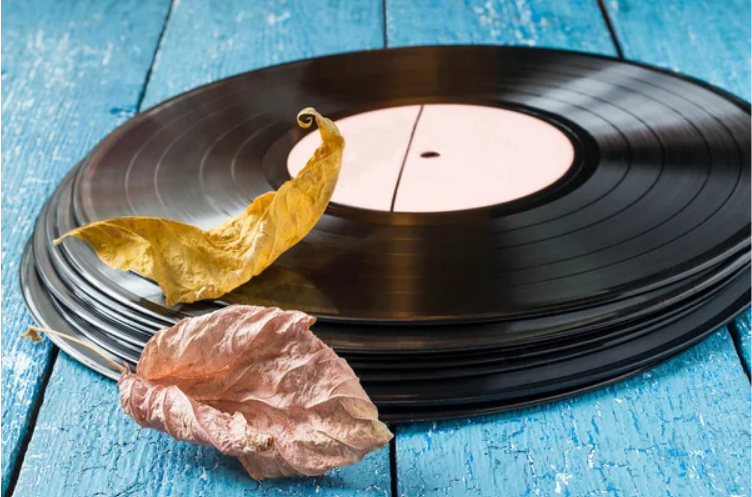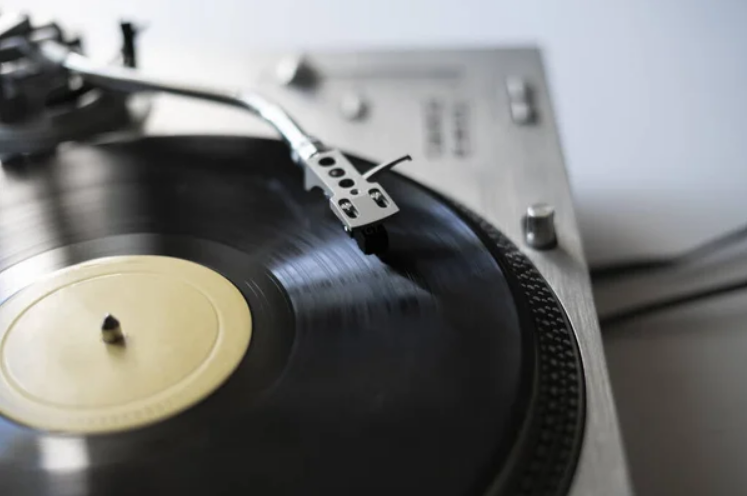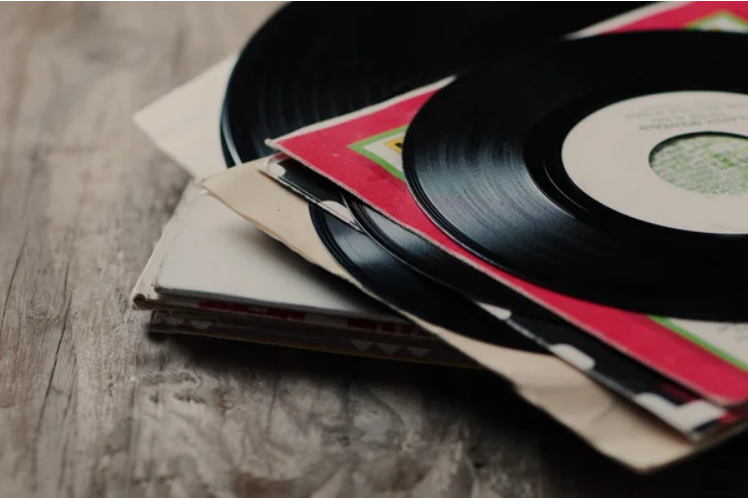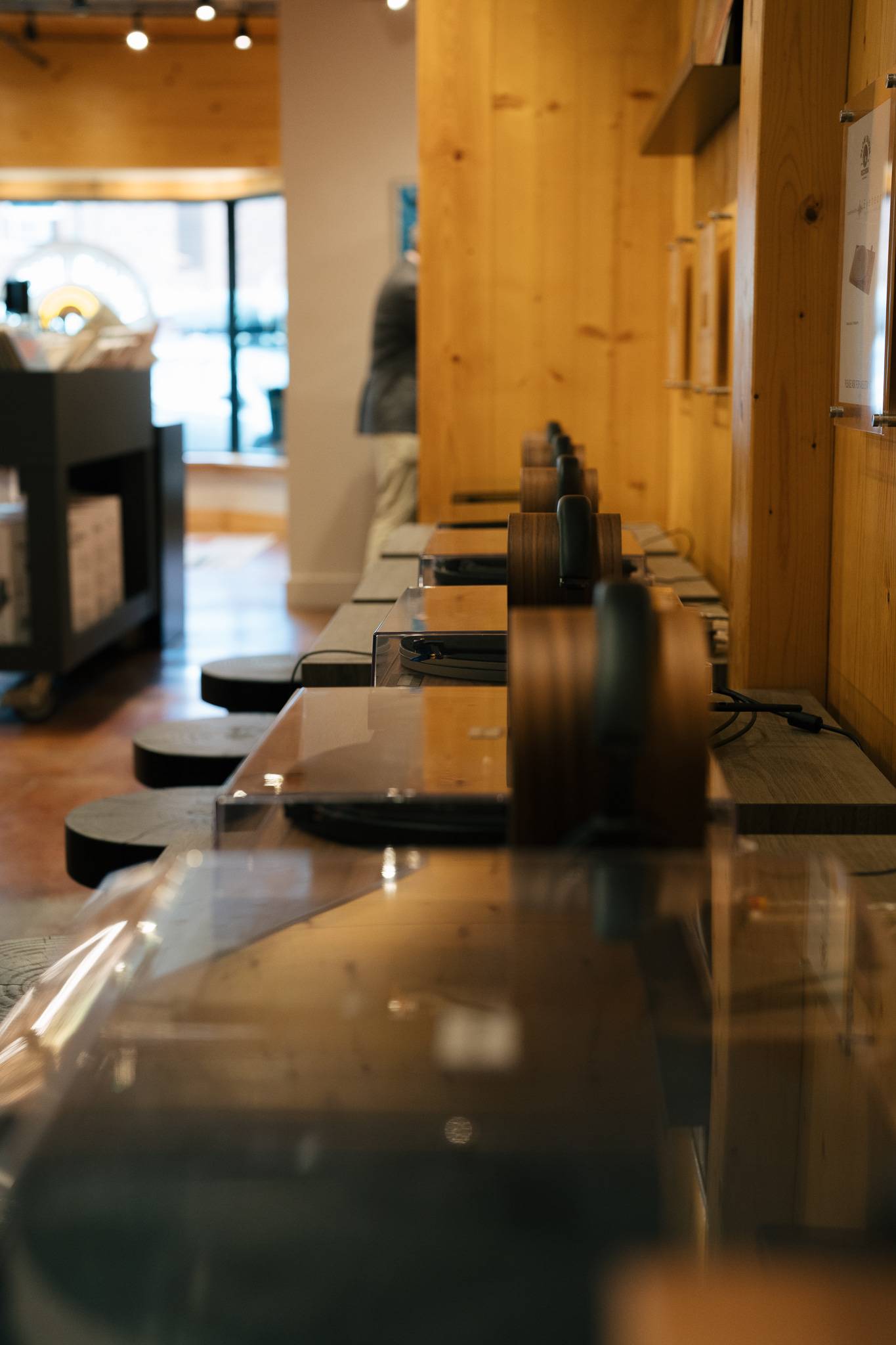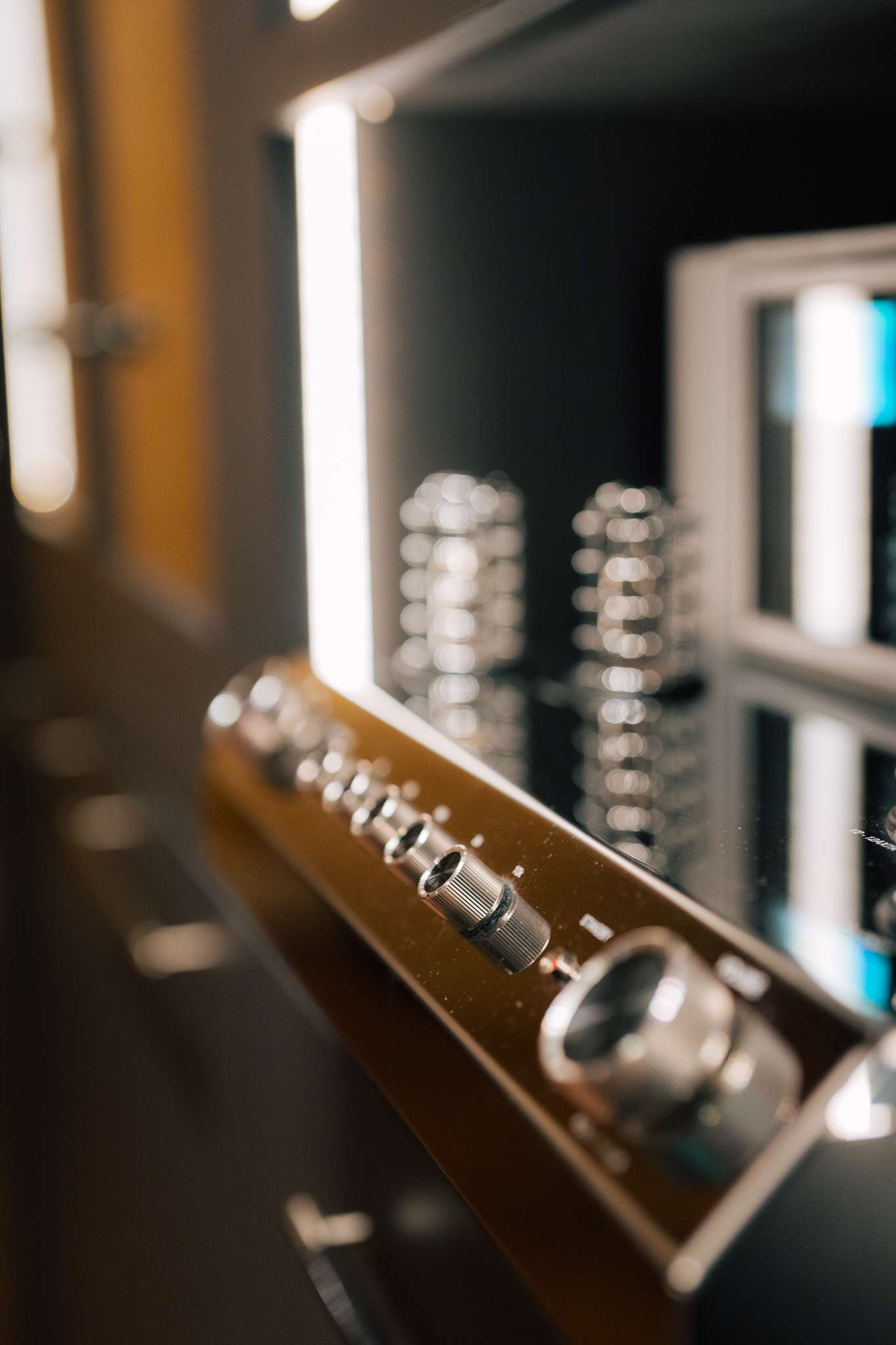A Comprehensive Introduction to Vinyl Records
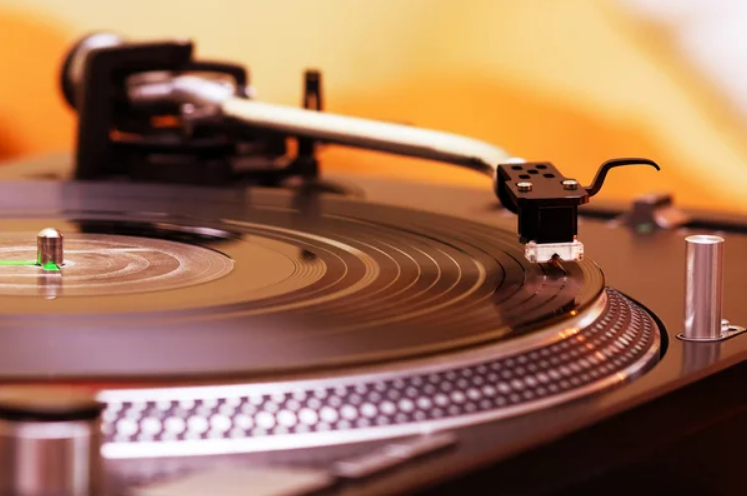
A Brief History of Vinyl Records
What is a vinyl record?
A vinyl record, also known as a phonograph record, gramophone record, or simply vinyl, is an analog sound storage medium consisting of a flat disc with a spiral groove. These grooves are etched into the surface of the record and contain the audio information that can be played back using a record player.
How Do Vinyl Records Work?
To understand how vinyl records work, we need to look at the process of recording and playback. During the recording process, sound waves are converted into electrical signals using a microphone. These signals are then etched into the surface of a master disc using a cutting stylus. The groove’s size and shape correspond to the sound’s frequency and amplitude.
When playing back a vinyl record, the turntable spins the disc at a constant speed (usually 33 1/3, 45, or 78 rpm). A stylus, or needle, is placed in the groove and follows its contours. The stylus’s vibrations are then converted back into electrical signals, amplified, and sent to speakers, reproducing the original sound.
The Science Behind Vinyl Sound Quality
The sound quality of vinyl records is often praised for its warmth, richness, and depth. This is due to several factors:
- Analog recording: Vinyl records are an analog medium, meaning that the sound waves are physically etched into the surface of the record. This allows for a more accurate representation of the original sound compared to digital formats, which sample the sound waves at discrete intervals.
- Continuous signal: Unlike digital formats, which break down sound into a series of binary digits, vinyl records store sound as a continuous signal. This eliminates the need for digital-to-analog conversion, which can introduce artifacts and distortion.
- Harmonic distortion: The physical limitations of vinyl records introduce a type of distortion known as harmonic distortion. While this might seem like a drawback, many listeners find that this distortion adds a pleasing warmth and character to the sound.
It’s important to note that the sound quality of vinyl records is highly dependent on factors such as the quality of the pressing, the condition of the record, and the caliber of the playback equipment. A well-maintained record played on a high-end turntable will offer a vastly superior listening experience compared to a worn-out record played on a low-quality system.
The Origins of Sound Recording
The history of vinyl records can be traced back to the invention of sound recording in the late 19th century. In 1877, Thomas Edison invented the phonograph, which used cylinders wrapped in tinfoil to record and playback sound. While groundbreaking, these cylinders were fragile and could only be played a few times before wearing out.
Early Improvements in Sound Recording
In the following years, several inventors worked on improving Edison’s design:
- Alexander Graham Bell developed wax-coated cardboard cylinders in 1881
- Chichester Bell and Charles Tainter created wax cylinders in 1885
- Emile Berliner invented the gramophone and flat disc records in 1887
Berliner’s flat disc records, made of hard rubber and later shellac, would become the predecessor to the modern vinyl record.
The Rise of Shellac Records
In the early 1900s, shellac records became the dominant format for recorded music. Made from a resin secreted by the lac bug, shellac records were more durable than wax cylinders and could hold more music on each side. The 78 rpm (revolutions per minute) speed became the standard for these records.
Key Milestones in the Shellac Era
Some key milestones in the shellac era include:
- The formation of the Victor Talking Machine Company in 1901
- The introduction of double-sided records in 1908
- The rise of jazz and blues recordings in the 1920s and 1930s
Shellac records reigned supreme until the mid-20th century when a new material revolutionized the industry.
The Birth of Vinyl Records
When Were Vinyl Records Invented?
When were vinyl records invented? The answer lies in the year 1948 when Columbia Records introduced the long-playing (LP) microgroove record, made of polyvinyl chloride (PVC) plastic. These 12-inch records played at 33 1/3 rpm and could hold over 20 minutes of music per side, a significant improvement over shellac records. The higher fidelity sound and longer playing time made LPs popular with both musicians and listeners.
The Advantages of Vinyl over Shellac
The transition from shellac to vinyl records brought about several significant improvements:
- Longer playing time: Vinyl LPs could hold up to 30 minutes of music per side, compared to the roughly 3 minutes per side of 78 rpm shellac records. This allowed for the development of the album as an artistic format, rather than just a collection of singles.
- Improved sound quality: Vinyl records offered lower surface noise, wider frequency response, and less distortion compared to shellac records. The microgroove technology used in vinyl records also allowed for a more precise reproduction of sound.
- Increased durability: Vinyl records were less brittle and more resistant to breakage than shellac records. They were also less susceptible to wear and tear from repeated plays.
- Lighter weight: Vinyl records were lighter than shellac records, making them more portable and easier to store.
The introduction of vinyl records marked a significant milestone in the history of recorded music, setting the stage for the format’s dominance in the second half of the 20th century.
Stereo Sound and the Album Era
The introduction of stereophonic sound in the late 1950s further enhanced the listening experience. Stereo records featured two separate audio channels, creating a sense of depth and spaciousness. This innovation coincided with the rise of the album as an art form, with artists like The Beach Boys, The Beatles, and Pink Floyd creating conceptual works that spanned entire LPs.
The Cultural Impact of the Album Format
The LP format allowed artists to create more ambitious and cohesive works, telling stories and exploring themes over the course of an entire record. Some of the most influential and acclaimed albums of all time were released during this era, including:
- The Beatles – “Sgt. Pepper’s Lonely Hearts Club Band” (1967)
- Pink Floyd – “Wall” (1973)
- Fleetwood Mac – “Rumours” (1977)
- Michael Jackson – “Thriller” (1982)
These albums not only showcased the artistic potential of the format but also became cultural touchstones, defining the musical landscape of their respective eras.
The Evolution of Record Players
When Was the Record Player Invented?
When was the record player invented? The history of the record player is closely tied to the development of recorded sound. Emile Berliner’s gramophone, invented in 1887, was the first device designed specifically for playing flat disc records. However, it was the introduction of the Victor Talking Machine Company’s Victrola in 1906 that popularized the concept of a turntable with an integrated amplification system.
Advancements in Record Player Technology
Over the years, record players have undergone numerous improvements and refinements. Some notable advancements include:
- The introduction of electric motors in the 1920s, replacing the need for hand cranking
- The development of high-fidelity (hi-fi) systems in the 1950s, offering improved sound quality
- The incorporation of belt-drive and direct-drive mechanisms in the 1960s and 1970s, reducing vibrations and improving speed accuracy
- The introduction of USB connectivity and built-in preamps in modern turntables, making it easier to digitize vinyl collections and connect to modern audio systems
Today, record players come in a variety of styles, from vintage-inspired models to sleek, modern designs with advanced features like Bluetooth connectivity and automatic tonearm lifts.
The Importance of Proper Turntable Setup
To get the most out of your vinyl records, it’s essential to ensure your turntable is set up correctly. This includes:
- Leveling the turntable to ensure the platter is spinning evenly
- Adjusting the tonearm’s counterweight to achieve the correct tracking force
- Setting the anti-skate mechanism to prevent the tonearm from skating across the record
- Aligning the cartridge to ensure the stylus is making proper contact with the grooves
Taking the time to properly set up your turntable can make a significant difference in sound quality and help protect your records from unnecessary wear and tear.
The Role of the Phono Preamp
One crucial component of a vinyl playback system is the phono preamp. Vinyl records produce a low-level signal that requires amplification before it can be played through speakers or headphones. The phono preamp’s job is to boost this signal to line level and apply the necessary equalization.
Phono preamps can be integrated into the turntable itself, built into a receiver or amplifier, or purchased as a separate component. The quality of the phono preamp can have a significant impact on the overall sound of a vinyl playback system, making it an important consideration for audiophiles and vinyl enthusiasts.
The Decline and Resurgence of Vinyl
The Rise of Digital Formats
In the 1980s and 1990s, digital formats like the compact disc (CD) and MP3 began to supplant vinyl as the primary means of music consumption. The convenience and portability of these formats, along with the rise of digital music stores like iTunes, led to a decline in vinyl sales.
The Vinyl Revival
Despite the dominance of digital formats, vinyl has experienced a remarkable resurgence in recent years. Factors contributing to this revival include:
- A desire for tangible, collectible objects in the digital age
- The perceived warmth and authenticity of analog sound
- The rise of Record Store Day and other vinyl-centric events
- The popularity of turntables as home decor and lifestyle accessories
Today, vinyl records are enjoyed by music enthusiasts of all ages, with both classic albums and new releases being pressed on the format.
The Role of Record Store Day
Record Store Day, an annual event that began in 2008, has played a significant role in the vinyl revival. Held on a Saturday in April, Record Store Day sees independent record stores around the world offering exclusive vinyl releases, limited editions, and special performances. The event has helped to raise awareness about the importance of supporting local record stores and has contributed to the renewed interest in vinyl culture.
Vinyl Sales in the 21st Century
The resurgence of vinyl has been reflected in sales figures. In the United States, vinyl sales have grown consistently since 2006, with a notable spike in recent years:
- In 2020, vinyl sales surpassed CD sales for the first time since the 1980s
- Vinyl sales accounted for 27% of all physical music sales in 2020
- In 2021, vinyl sales continued to grow, with a 29% increase compared to the previous year
These numbers demonstrate the enduring appeal of the format and its ability to coexist with digital music consumption.
Vinyl in the Digital Age
In the 21st century, vinyl records have found their place alongside digital formats. Many artists now release their albums on vinyl as well as CD and digital platforms, recognizing the format’s enduring appeal and the desire of fans to own a physical copy of their favorite music.
The Impact of Streaming on Vinyl Sales
The rise of streaming services like Spotify and Apple Music has also had an unexpected impact on vinyl sales. Some argue that the convenience and accessibility of streaming have led to a renewed appreciation for the tactile experience of playing a record. Others see vinyl as a way to support artists directly, as the format typically offers higher profit margins than streaming royalties.
The Resurgence of Record Stores
The vinyl revival has also breathed new life into the record store industry. Independent record shops, once thought to be a dying breed, have experienced a resurgence in recent years, becoming hubs for music lovers to discover new artists, connect with like-minded individuals, and celebrate the joys of crate-digging.
Vinyl and the Future of Music
As we look to the future, it’s clear that vinyl records will continue to hold a special place in the hearts of music lovers. While digital formats and streaming services offer unparalleled convenience and accessibility, the tangible, tactile experience of playing a vinyl record remains unmatched.
Moreover, the vinyl format has proven to be surprisingly resilient in the face of technological change. Just as it weathered the CD revolution of the 1980s and 1990s, vinyl has adapted to the digital age, finding new ways to coexist with and complement modern music consumption habits.
The Enduring Legacy of Vinyl Records
From the earliest days of sound recording to the present day, vinyl records have been a constant presence in the history of music. They have served as a medium for countless musical milestones, from the birth of rock ‘n’ roll to the rise of hip-hop and beyond.
Vinyl as a Symbol of Music’s Past and Future
As we move forward into an increasingly digital world, it’s heartening to see that vinyl records continue to hold a place in our cultural consciousness. Whether you’re a seasoned collector or a curious newcomer, the history of vinyl records is a rich and fascinating one, full of innovation, artistry, and a deep love for music.
So the next time you place a record on your turntable, take a moment to appreciate the decades of history and passion that have gone into making that moment possible. Vinyl records may be a product of the past, but their legacy is one that will endure long into the future.
Explore the world of vinyl with Slow Burn Records!
At Slow Burn Records, we offer an extensive collection of vinyl records that will satisfy both seasoned collectors and new enthusiasts. Whether you’re searching for rare Japanese pressings, iconic albums, or the latest releases, we’ve got you covered. Dive into our carefully curated selection of vinyl records and find your next favorite album today! Subscribe to our newsletter for the latest arrivals and exclusive offers.
Contact us today at 406-730-2303 or email us at info@slowburnrecords.com. We can’t wait to share our passion for vinyl with you!
Frequently Asked Questions
When was the record player invented?
The first device designed specifically for playing flat disc records was Emile Berliner’s gramophone, invented in 1887. However, the Victor Talking Machine Company’s Victrola, introduced in 1906, popularized the concept of a turntable with an integrated amplification system.
How do I properly store my vinyl records?
To ensure the longevity of your vinyl collection, store your records vertically in a cool, dry place away from direct sunlight. Use protective sleeves to minimize dust and debris, and avoid stacking records too tightly to prevent warping.
Can scratched vinyl records be repaired?
While there are methods to reduce the audibility of scratches on vinyl records, such as using wood glue or toothpaste, these are temporary solutions that may cause further damage in the long run. Prevention is the best approach, so handle your records carefully and always store them in their sleeves when not in use.
What is the difference between a belt-drive and a direct-drive turntable?
Belt-drive turntables use an elastic belt to connect the motor to the platter, isolating the platter from motor vibrations. Direct-drive turntables have the motor directly beneath the platter, offering more consistent speed and stronger torque. Both designs have their advantages, and the choice ultimately comes down to personal preference.
Are picture disc vinyl records lower quality than standard pressings?
Picture discs, which feature custom artwork printed directly on the record surface, are often criticized for having lower sound quality compared to standard black vinyl pressings. This is due to the additional layers of material used to create the picture disc, which can lead to increased surface noise and less defined grooves. However, many collectors still seek out picture discs for their unique visual appeal.

